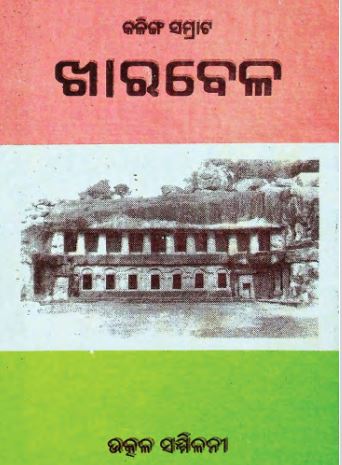In 1999, the literary world witnessed the publication of a remarkable Odia essay book titled “Kalinga Samrat Kharabela,” compiled and edited by the renowned scholars Rabi Narayan Das, Cp., and Gopal Krushna Srichandan. This book plays a crucial role in reviving interest in the rich heritage of Kalinga, particularly through the lens of its most illustrious ruler, Kharabela, who is often considered a symbol of Odia pride and cultural identity.
The title itself invokes a sense of grandeur, proclaiming Kharabela as the monarch of Kalinga, a region steeped in historical significance. Kharabela ruled during the 1st century BCE and is best known for his military prowess and the establishment of a powerful Jain Buddhist community in his kingdom. The essays contained within this volume delve deep into his life, achievements, and the socio-political landscape of Kalinga during his reign.
One of the most remarkable aspects of Kharabela’s rule was his dedication to promoting Jainism, which was crucial for cultural and religious unity in Kalinga. The book emphasizes Kharabela’s patronage of various religions, showcasing a ruler who was ahead of his time in promoting diversity and coexistence. His efforts in constructing the Udayagiri and Khandagiri caves, which served as monastic retreats and centers of learning, underline his commitment to spiritual and intellectual growth.
The authors expertly weave historical facts with engaging narratives, making “Kalinga Samrat Kharabela” not just an academic work but also a literary piece accessible to general readers. The essays provide a nuanced understanding of Kharabela’s administrative policies, military strategies, and diplomatic relations with neighboring states, illustrating him as a formidable leader who navigated the complexities of his time adeptly.
One cannot overlook the geographical and cultural significance of Khandagiri and Udayagiri caves, which stand as lasting legacies of Kharabela’s vision. The book describes these remarkable structures, carved into the soft rock, as embodiments of architectural ingenuity and artistic expression that continue to attract scholars and tourists alike. The images of beautifully sculptured idols and inscriptions give readers a vivid picture of Kalinga’s artistic excellence, which flourished under Kharabela’s reign.
Moreover, the compilation addresses the socio-economic structure of Kalinga during this era. It discusses trade routes, agriculture, and the interaction between urban and rural communities, offering a comprehensive view of life during Kharabela’s rule. Through meticulous research and thoughtful analysis, Das and Srichandan have provided readers with an opportunity to appreciate the intricate tapestry of Kalinga’s history.
In a broader context, “Kalinga Samrat Kharabela” emerges as a significant scholarly tribute to the rich history of Odisha. It serves as an essential resource for students, researchers, and anyone interested in Odishan heritage. By bringing Kharabela’s story to life, Rabi Narayan Das and Gopal Krushna Srichandan enrich the cultural narrative of Odisha and inspire pride among Odias about their glorious past.
In conclusion, the book “Kalinga Samrat Kharabela” is a compelling exploration of an important period in Odisha’s history, blending historical scholarship with narrative flair. Its legacy not only preserves the memory of Kharabela but also invites future generations to connect with their cultural roots and understand the profound historical significance of Kalinga.
Books Info
| Books name | Kalinga Samrat Kharabela |
| Author | Rabi Narayan Das, Cp., Gopal Krusna Srichandan, Ed. |
| No Of pages | 175 |
| Publisher | Utkala Sammilani |
| Publication | 1999 |
| Printed At | Mayur Publicationas |
| Distributor | NA |

